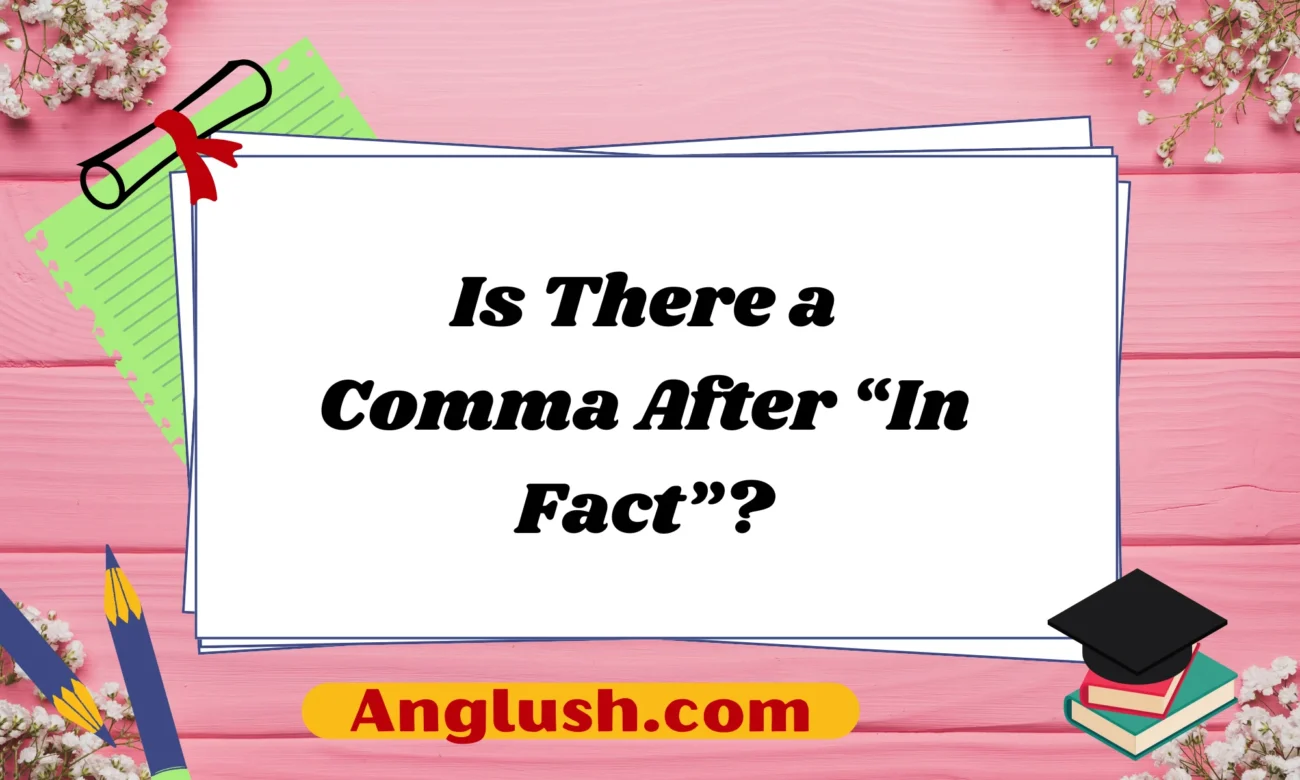Introduction
Punctuation plays a crucial role in clarifying meaning and improving readability in written communication. One common question many writers ask is whether a comma should follow the phrase “in fact.” The answer depends on how the phrase is used within a sentence.
This article will explore the grammatical rules governing the use of commas with “in fact,” provide practical examples, and discuss how punctuation affects tone and clarity. Additionally, we’ll offer alternative ways to express “in fact” in both formal and informal writing.
By the end of this guide, you’ll have a solid understanding of when to use a comma with “in fact” and how to replace the phrase when necessary.
When Should You Use a Comma After “In Fact”?
The need for a comma after “in fact” depends on its position and function within a sentence. Below are the primary scenarios where a comma is required:
1. When “In Fact” Begins a Sentence
When “in fact” appears at the beginning of a sentence, it acts as an introductory phrase. In such cases, a comma should follow it to set it apart from the rest of the sentence.
✅ Correct Example:
- In fact, the meeting was rescheduled to next Monday.
🚫 Incorrect Example:
- In fact the meeting was rescheduled to next Monday.
The comma helps separate the introductory phrase from the main clause, making the sentence easier to read.
2. When “In Fact” Interrupts a Sentence
When “in fact” appears in the middle of a sentence as a parenthetical phrase (providing additional emphasis), it should be enclosed with commas.
✅ Correct Example:
- The new policy, in fact, has been well received by employees.
🚫 Incorrect Example:
- The new policy in fact has been well received by employees.
The commas ensure the phrase is properly set off from the rest of the sentence.
3. When “In Fact” Appears at the End of a Sentence
If “in fact” appears at the end of a sentence, a comma is usually placed before it to indicate a pause.
✅ Correct Example:
- She was the best candidate for the position, in fact.
🚫 Incorrect Example:
- She was the best candidate for the position in fact.
This usage is less common in formal writing but frequently appears in conversational and creative writing.
When Should You NOT Use a Comma After “In Fact”?
There are situations where a comma is unnecessary after “in fact”:
1. When “In Fact” is Essential to the Sentence
If “in fact” directly connects to the sentence’s meaning without acting as an interrupter or introductory phrase, no comma is needed.
✅ Correct Example:
- His research in fact supports the findings of previous studies.
🚫 Incorrect Example:
- His research, in fact, supports the findings of previous studies.
Here, “in fact” functions as an essential part of the sentence rather than an interruption.
2. When “In Fact” is Used Within a Clause Without a Pause
If the phrase flows naturally without requiring a pause, a comma is not needed.
✅ Correct Example:
- She is in fact an expert in the field.
🚫 Incorrect Example:
- She is, in fact, an expert in the field.
The second example adds unnecessary commas, disrupting the sentence’s natural flow.
Alternatives to “In Fact”
While “in fact” is widely used, varying your word choice can make your writing more engaging and nuanced. Below are alternatives categorized by tone and formality:
Formal Alternatives
For professional and academic settings, consider these alternatives:
- Indeed
- Example: The experiment was successful. Indeed, the results exceeded expectations.
- As a matter of fact
- Example: The project is ahead of schedule. As a matter of fact, we may finish early.
- Actually
- Example: He is not just an employee. Actually, he is the company’s co-founder.
- To be precise
- Example: The machine operates at high efficiency. To be precise, its success rate is 98%.
- Veritably
- Example: The author is veritably a literary genius.
Casual Alternatives
For informal conversations, these options work well:
- Truth be told
- Example: Truth be told, I wasn’t expecting such a great outcome.
- Honestly
- Example: Honestly, I had no idea you were coming.
- For real
- Example: Are you quitting your job for real?
- No kidding
- Example: No kidding, that was the best meal I’ve ever had!
- Seriously
- Example: Seriously, I can’t believe how fast time flies.
10 Texting Examples of “In Fact” and Its Alternatives
When texting, keeping messages concise and clear is key. Here are 10 practical examples:
- In fact, I was just thinking about you!
- The event is canceled, in fact.
- Actually, I already finished that assignment.
- You’re right! Indeed, it’s been a long day.
- Honestly, I didn’t expect that plot twist.
- Truth be told, I wasn’t a fan of the movie.
- He didn’t just win—he dominated. For real!
- No kidding, she’s the best chef I know.
- Seriously, I need a vacation!
- As a matter of fact, I saw them together yesterday.
Final Thoughts
The phrase “in fact” is a useful tool for adding emphasis, but knowing when to use a comma after it is essential for clarity. Follow these key rules:
✅ Use a comma when “in fact” begins a sentence or acts as an interrupter.
✅ Use commas to set off “in fact” in the middle of a sentence.
✅ Avoid a comma when “in fact” is essential to the sentence structure.
Additionally, using alternatives to “in fact” can make your writing more dynamic and suited to different contexts. Whether you’re writing formally or texting casually, understanding these nuances will enhance your communication skills.

